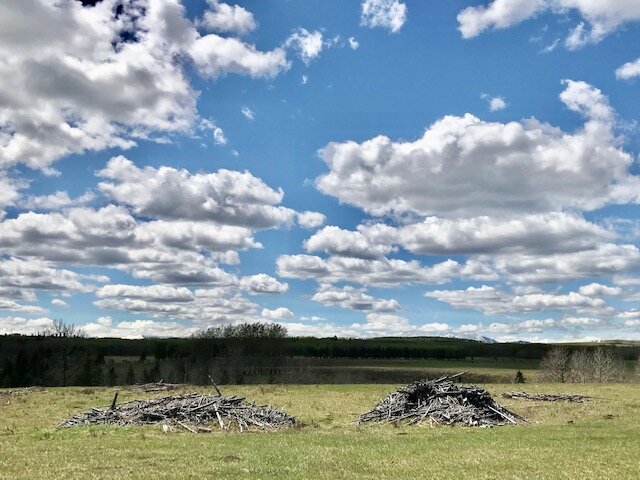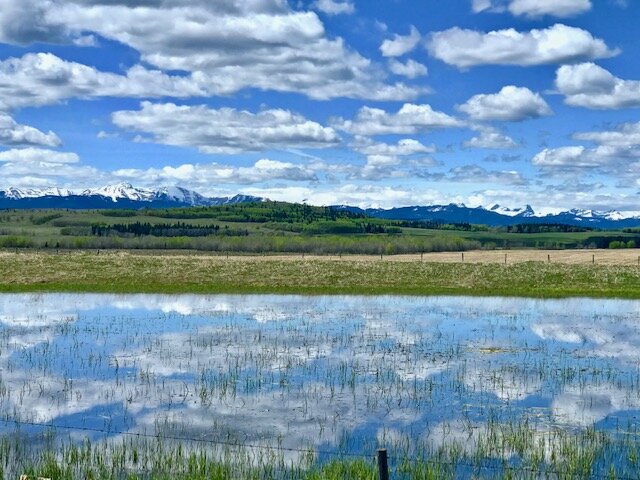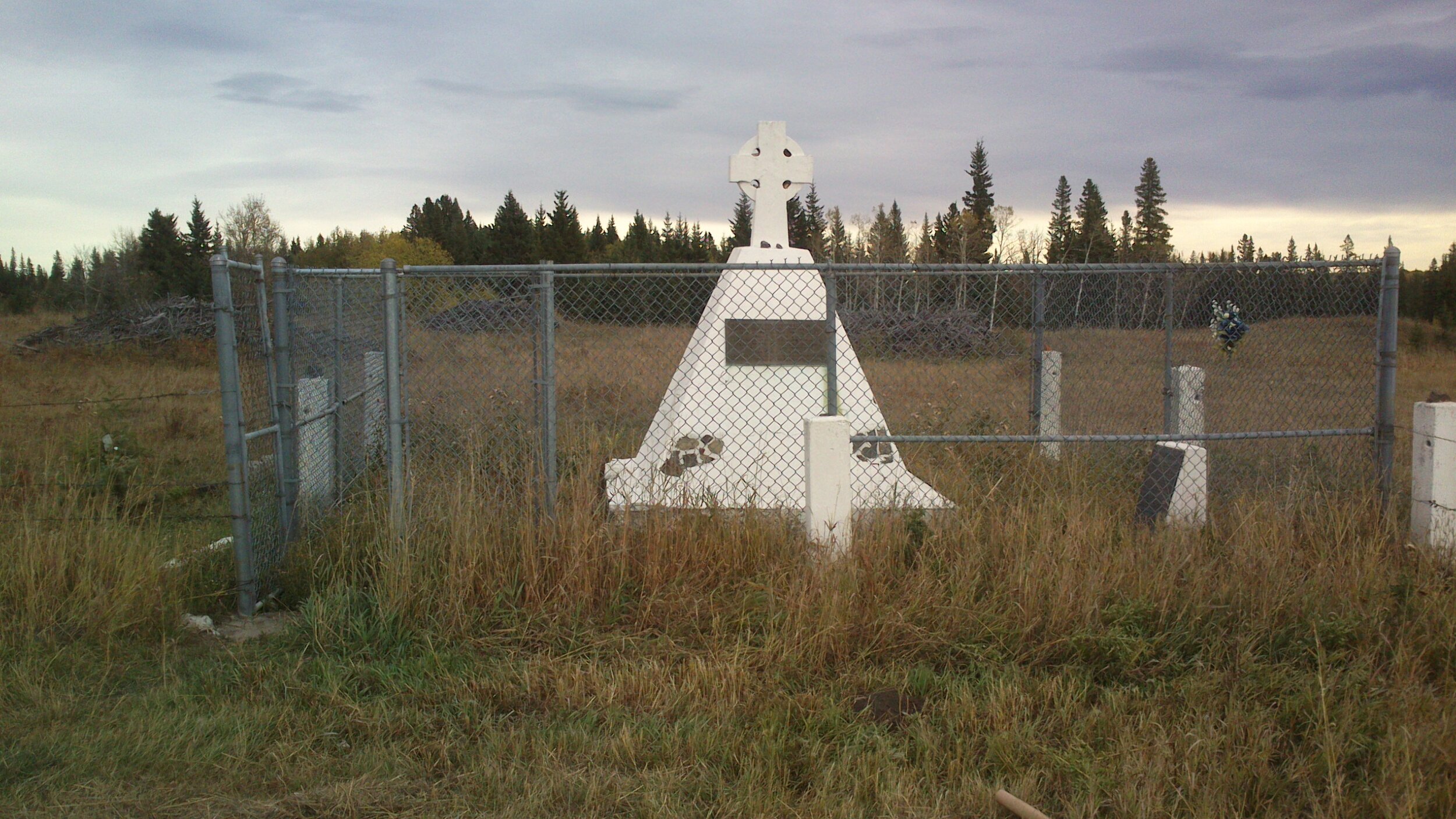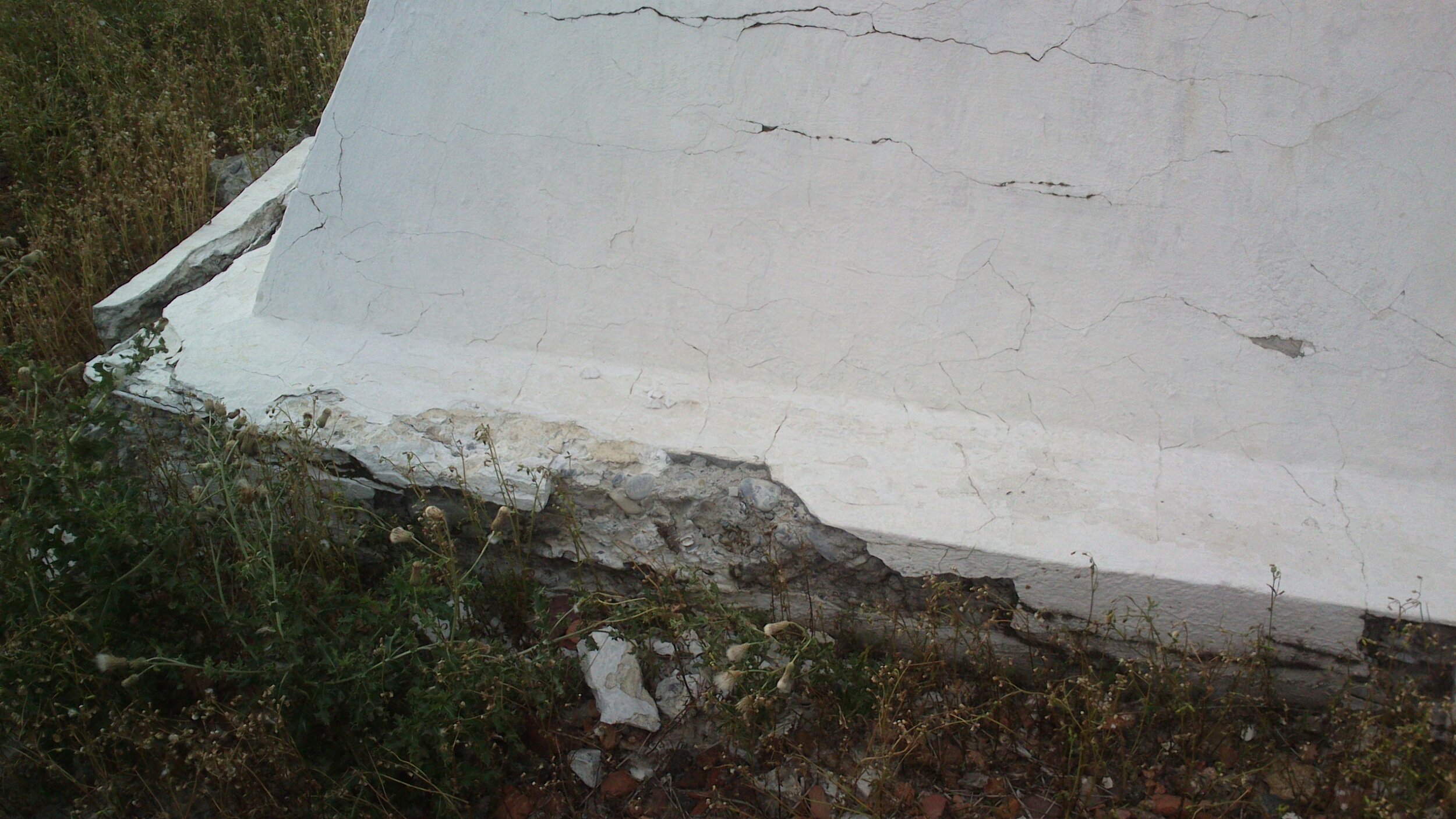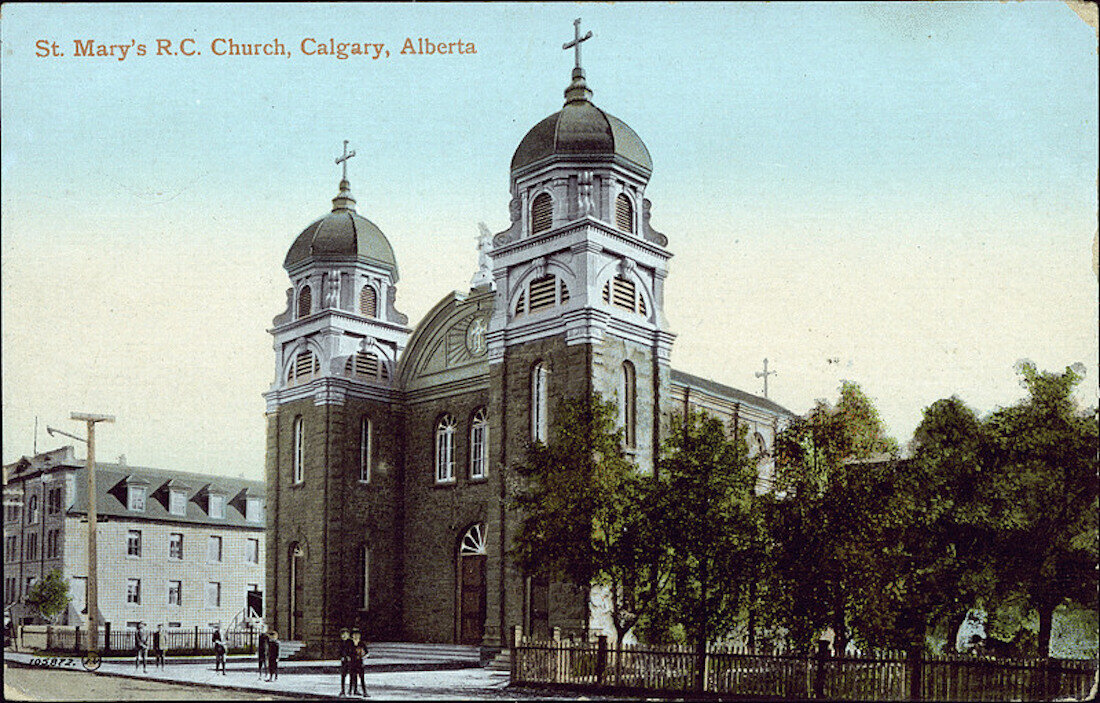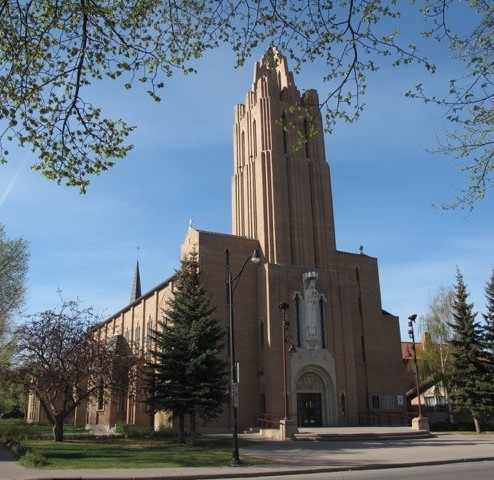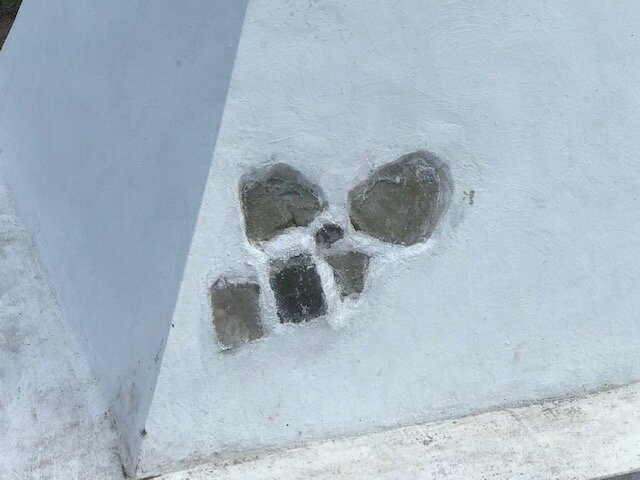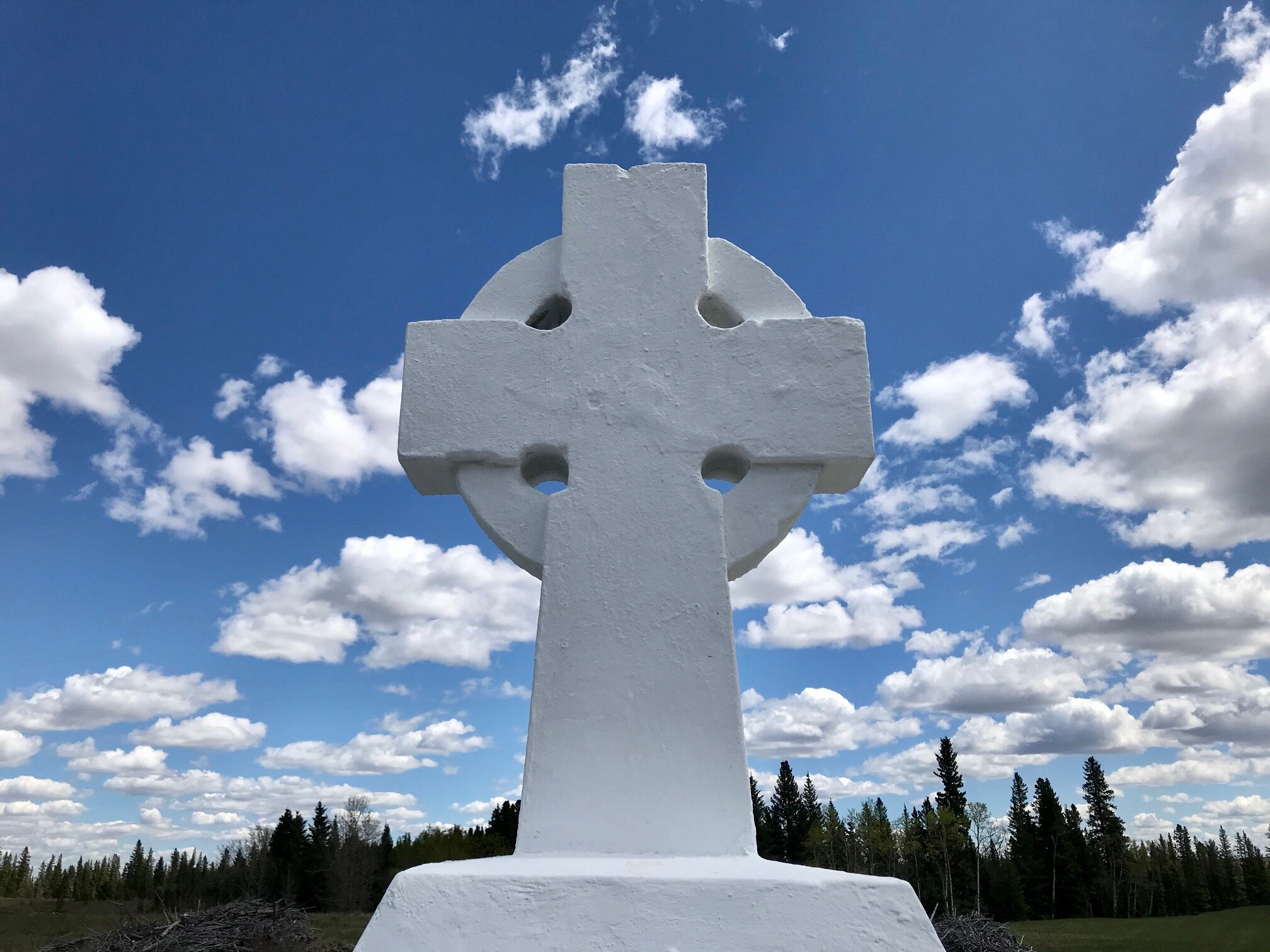Things To Do Near Calgary: Our Lady of Peace Mission
For 20+ years, I drove past a dull brown sign on the Highway 22 on the way to Redwood Meadows Golf Course that read “Our Lady of Peace Mission” historic site and thought I should check it out, but never did. This year a bright new blue sign appeared with the same info but also saying the site was only 3 km away. So last Sunday, early for a golf lesson, I thought “Why not?”
Editor Note: Be sure to read until the end as there are two very interesting emails I received about this blog that I am sure you will find interesting.
Postcard Views
It was amazing! Almost as soon as I turned off the highway, I was driving into a postcard view of the Canadian Rockies foothills. It was like magic, I was back in the late 1800s when the early pioneers first arrived in southern Alberta. It is incredible how different the world can be just a few 100 meters off the highway…but I digress.
As promised, there stood a cairn where the mission had once been. Situated on top of the Elbow River bluff above the flood waters, with an outstanding view of the snow-capped mountains in the distance, it was a sight to behold – it was almost heavenly. I was surprised when I arrived, to see two cars there.
As I got out of my car, a gentleman welcomed me to the site and after asking a few questions, (which he knew the answers to immediately), I asked if he was somehow involved with the site. Turns out I was talking to Dan Lacroix, a retired teacher who has been working for the past seven years to fix the cairn, refresh the landscaping and add two more information panels. He was excited to learn I was the “everyday tourist” and pleased that I was interested in doing a blog. So I gave him my email address so he could send me more information – and he did the same evening.
History
Our Lady of Peace (Notre Dame de la Paix) was the first permanent Roman Catholic Church mission in Southern Alberta.
A crude wooden chapel-cabin, 15 feet square, erected in 1872, sat on a crest well above the Elbow River. It was built by Alexis Cardinal; a Metis lay helper to the Missionary Oblates of Mary Immaculate and the hunter and handyman for Father Albert Lacombe omi, (the lower case letters “omi” signify a member of the Oblates of Mary Immaculate) who planned to establish a permanent mission among the peoples of the Blackfoot Confederacy in southern Alberta.
Lacombe had passed by this spot on a journey through the area in 1869 and often camped in the vicinity during annual visits to the Blackfoot territory. Bishop Vital Grandin omi, who formed St. Albert Diocese established in 1871 in St. Albert AB, was compelled to send Father Lacombe eastward to solicit funds, recruit priests, and promote immigration for the new missions of the North West in 1872.
During Father Lacombe’s absence, Blackfoot Chief Crowfoot asked Bishop Grandin for another missionary to live amongst his people. So, in 1873 Father Constantine Scollen omi became the first permanent resident of Our Lady of Peace Mission (Mission Notre Dame de la Paix) and two years later, was joined by Father Leon Doucet omi.
Based at Our Lady of Peace mission, the two missionaries visited the First Nations people, and invited them to take part in rituals at the small church. The mission, however, was to be short lived. In 1875, Father Scollen sent Father Doucet to establish a new mission site near the confluence of the Bow and Elbow Rivers called “Moh-kins-tsis” by the Blackfoot. It was here that Father Doucet welcomed the North West Mounted Police when they arrived to build Fort Calgary later that year.
From that time on the original mission site, was only used occasionally as most of missionary work was conducted from the Calgary site. It was finally abandoned in 1882.
The Cairn built in 1939, had fallen into disrepair over the years and that is why Lacroix decided to restore it.
(Dan Lacroix)
FYI: The Blackfoot Confederacy, sometimes referred to as the Blackfoot Nation or Siksikaitsitapi, is comprised of three Indigenous nations, the Kainai, Piikani and Siksika. People of the Blackfoot Nation refer to themselves as Niitsitapi, meaning “the real people,” a generic term for all Indigenous people, or Siksikaitsitapi, meaning “Blackfoot-speaking real people.” The Confederacy’s traditional territory spans parts of southern Alberta and Saskatchewan, as well as northern Montana. In the 2016 census, 22,490 people identified as having Blackfoot ancestry.
There is a replica of the Our Lady of Peace Mission at Calgary’ s Heritage Park (photo courtesy of Heritage Park). FYI. Heritage Park is Canada’s largest living history museum.
Catholic Church Timeline
1873 – Father Constantine Scollen founds Our Lady of Peace Mission, the first mission in southern Alberta.
1875 – Father Scollen and Father Leon Doucet move the mission to a hut near the site of what becomes Fort Calgary, then within months moves again to the present Holy Cross Hospital.
1882 – Father Lacombe takes charge of the mission.
1883 – Settlers in East Calgary build a church called St. Patrick.
1884 – Father Lacombe secures homestead property for the mission and the area becomes known as the Mission District. A new mission building is erected on what is now the grounds of Sacred Heart Convent.
1884 – The CPR locates to the west side of the Elbow River where the Calgary Tower is today. The settlers in East Calgary move to be near the railway, bringing St. Patrick church with them. The church is left on a temporary site.
1885 – The Sisters, Faithful Companions of Jesus arrive and are given the new mission building to serve as their convent. St. Patrick’s church is moved to the site of the present parish hall and renamed Our Lady of Peace.
1889 - The new church, a sandstone building named St. Mary’s, is completed.
1912 - The Diocese of Calgary is formed and St. Mary’s church is designated a cathedral.
1955- A new parish hall is built to serve as a church during the construction of the new (current) St. Mary’s Cathedral. The Cathedral had to be demolished due to structural problems. (left photo)
1957 - The new Cathedral is completed and consecrated on December 11th. (right photo)
(St. Mary’s Cathedral website)
What’s there today?
Today, the 15 foot square area where the chapel/cabin was located is outlined by chains attached to bollards. A white cement cairn with a cross on top, built in 1939, and blessed by Bishop Francis Carroll of the Diocese of Calgary sits in the middle. It incorporates stones from the original mission church’s fireplace and chimney, as well as an interpretive plaque. FYI: The stones, embedded into the façade of the cairn are the only archaeological remains from the original mission.
Our Lady of Peace Mission site – with its cairn - was designated a Registered Historic Site on March 26, 1976 by the Hon. Horst Schmidt, Ministry of Culture, Government of Alberta, commemorating the courage and determination shown by Alberta’s missionaries in the early days of Alberta’s history.
While the plaques on the 10 foot cairn tell the story of the Mission from the Roman Catholic Church’s perspective, it would be interesting to know how the people of the Blackfoot Confederacy would tell the story. Having worked at Old Sun College, on the Blackfoot Reserve near Gleichen, Alberta, I can’t help but think their stories of the mission would be very enlightening. The fact the mission site is very near the Tsuut’ina nation’s reserve begs the questions why this this site was chosen for the mission and how many of the Blackfoot people converted to Catholicism in the late 1800s and what relationship there is today between the Confederacy and the Catholic Church today. In the USA, (could not find comparable info for Canada) 25% of all native Americans are Catholic today!
This is what the Our Lady of Peace Mission site looks like today.
How to get there?
The Cairn marking the site of Our Lady of Peace Mission (Mission Notre Dame de la Paix), the first Roman Catholic Church in Southern Alberta, is located just west of Calgary with easy access from the city's north or south. Find your way to Highway #22, (aka The Cowboy Trail), between the Highway #8 roundabout to the south and the Trans-Canada Highway #1 interchange to the north. Turn west on Township Road #242, which is just north of the Elbow River bridge. Then turn south on Range Road #43 to the 'dead-end' where you will find the Cairn site. It is well marked. And yes, it is on Google Maps.
Lacroix asked me to advise visitors “There are no facilities at this remote location so bring adequate food and water for a short stay and enjoy the peace and quiet of a beautiful spot. Call it a pilgrimage or call it a retreat...nature's serenity makes it an inspiring and inviting place to reflect and to pray.”
Last Word
It is amazing what happens when you get off the highway and travel the backroads. So, next time you are driving and see a sign to a site that might be interesting - check it out - don’t just drive by.
Also, don’t be afraid to talk to strangers – they might be friendly and have lots of interesting information.
AB wrote:
I need to tell you that I cringed when it came to the line about Tsuut’ina and the Blackfoot people. The article was good – up until this point. And I don’t think the author meant any harm, but there are a couple things I just want to point out as to why I cringed. I hope you don’t mind me being honest about this. You can totally ignore this email if you don’t think it’s fitting or you don’t care. I just can’t stay silent.
There are 2 things about this.
1. Tsuut’ina people are Dene not Blackfoot. So this could be misleading. I realize that the author is talking about the relationships in the 1800’s with the Blackfoot specifically, but a reader who reads this and doesn’t know about Tsuut’ina Nation may just assume that they are Blackfoot people. And they are not. There is a great history that goes with that, and how the Blackfoot saved the Dene people and how Tsuut’ina became a Dene Nation. But the language and culture are completely different with both Nations.
2. The last sentence also made me cringe a bit. Yes it is fantastic that God’s word spread to other nations, and that people did become Christians, but the HOW is why I cringe. It is true that many Indigenous people are Catholic now, but the Residential school system played a major role in that. And I think we need to recognize that piece of history if we are going to talk about how people converted to Christianity back then.
Everyday Tourist: I did know that the Tsuut’ina people are not part of the Blackfoot Nation, but thought it would be confusing to explain the difference but that is another reason why I questioned the location. It should be noted that Treaty 7 (which included the Tsuut’ina) wasn’t signed until 1877, after the Mission was built so the treaty land didn’t exist prior to that. History get complicated the more you understand it.
BB wrote:
When I lived in Calgary from 1959 to 1965 I did volunteer work with the Sisters of Providence. I didn't have a car and so I went by bus out to their place after work once a week. They looked after grown children who were badly handicapped. These children were in big cribs and what they had me doing was changing their adult diapers. I did not mind this as it was my volunteer work. One day they invited me into their living room which was not that big and there was a piece of furniture which was like a cabinet - maybe something that use to have musical piece in it. Anyway they took out a container and it was Father Albert Lacombe's heart. I guess because they did missionary work for Father Lacombe all thru' those many years they were given his heart and they have kept it preserved. Another story I heard about the sisters and Father Lacombe is that the C.P.R. gave Father Lacombe a life-long pass for travelling on their railway and he gave it for one of the sisters to use - maybe to go to visit family in Quebec - and the train conductor said to the sister when he looked at the pass - you don't look like a priest.
If you like this blog, you will these links:
Meeting Creek: Ghost Town Meets Art Town
Lacombe: Mural Capital of Alberta
Road Trip: Gleichen, Cluny, Blackfoot Crossing, Medicine Hat

